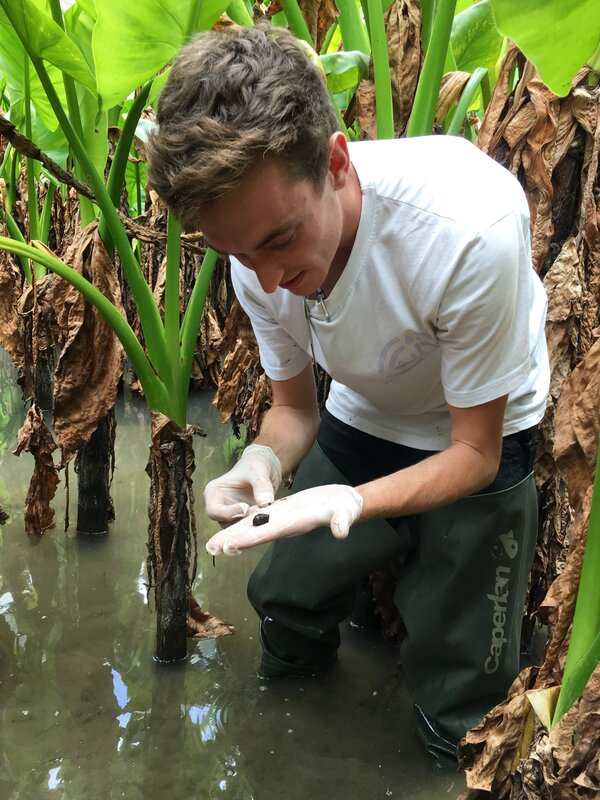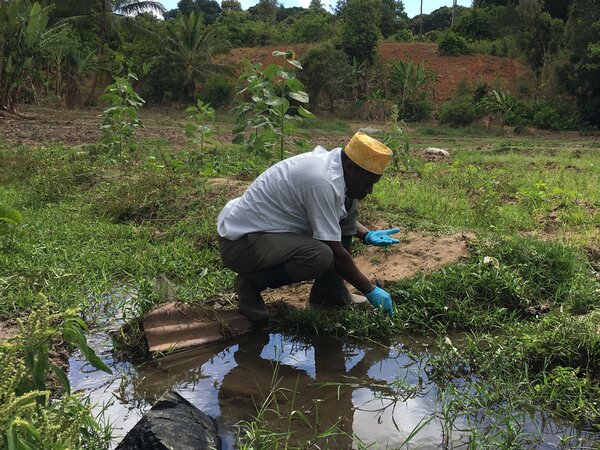Hunting snails in Zanzibar - LCNTDR travel grant report
In 2016, Tom Pennance, a PhD student based at the Natural History Museum (NHM) became the first recipient of the LCNTDR’s Travel Award, an award that provides early-career researchers and students with the funding to take part in activities that may not be feasible on a normal project or studentship budget.
In this article Tom describes his trip to Pemba Island in the archipelago of Zanzibar to undertake fieldwork for the development of a new molecular tool with huge potential for schistosomiasis surveillance in an elimination setting.
My research focuses on the transmission and genetics of schistosomes, the parasitic worms that cause schistosomiasis, and the biology of their intermediate snail hosts. I completed my MSc in Medical Parasitology at the London School of Hygiene and Tropical Medicine.
I officially started my PhD in January 2017, but when a great opportunity to conduct preliminary fieldwork towards my PhD arose in early 2016, with a trip being planned for October 2016, it was the LCNTDR travel award that made it possible for me to be involved with the project from the start.
The fieldwork in October 2016 was conducted on Pemba Island (Zanzibar, United Republic of Tanzania), a small island just off the East coast of Tanzania and Kenya. The focus of the fieldwork was to locate and survey freshwater bodies for Bulinus species snails, the intermediate host for Schistosoma haematobium, the causative agent of urogenital schistosomiasis on the island. We worked with a team from the Public Health Laboratory on Pemba, who assisted with planning and implementation of the fieldwork.
Schistosomiasis Elimination in Zanzibar
In 2011, the Zanzibar Elimination of Schistosomiasis Transmission (ZEST) alliance, led from the NHM and funded by the Schistosomiasis Consortium for Operational Research and Evaluation (SCORE), was formed to work towards the elimination of urogenital schistosomiasis on the island. This was done through the promotion of safe behavioural practices, removing the intermediate snail host and also collaborating with the Schistosomiasis Control Initiative (SCI) to deliver biannual treatment of Praziquantel to the eligible population.
Annual parasitological surveys sampling school-aged children and adults indicates that the prevalence of schistosomiasis has reduced in many areas over the past 5 years; however there are still some ‘persistent hot-spots’, where prevalence stays high despite ongoing control. Our previous research (published in The LCNTDR Collection: Advances in scientific research for NTD control) aiming to characterise persistent hot-spots in Zanzibar concludes that persistent hot-spots are associated by the proximity of large numbers of human water contact sites containing Bulinus snails to local schools.
Xenomonitoring, a disease surveillance tool
Does the abundance of human-water contact sites with Bulinus snails, characteristic of hotspots, indicate higher S. haematobium transmission? Could molecular snail infection surveillance (xenomonitoring) be used as a predictive tool for monitoring the rate of S. haematobium transmission? NHM researcher, Dr Bonnie Webster, decided to answer these questions by beginning to develop such a tool and comparing S. haematobium transmission in persistent hot-spots, to areas responding well to treatment (declining spots).
Developing a high-throughput system, capable of processing large numbers of snails, can confirm the absence of patent and pre-patent S. haematobium infections in local human-water contact sites (HWCSs), thereby confirming transmission interruption. In testing this surveillance technique, we are also developing a molecular tool to certify local elimination of schistosomiasis transmission.
Fieldwork in Pemba
Using prevalence data (Knopp et al. Unpublished), 8 areas were identified to be included in a feasibility study where we would survey HWCSs to measure the number of infected / uninfected snails present. There were clear differences in the types of HWCSs found in each area, some being large ponds where no Bulinus snails were present (Figure 1), to small drying streams where Bulinus snails were abundant (Figure 2). Bulinus snails were collected by hand or using a ‘scoop’ (Figure 3), and then brought back to the Public Health Laboratory (Pemba) to first check for patent infections by ‘shedding’ snails. The process of liberating the parasitic schistosome from its snail host. Snails were all to be preserved in ethanol for transport back to the Schistosomiasis Collection at the NHM along with the schistosomes.
Back at NHM the schistosomes can be more accurately molecularly characterized to identify them as either human or non-human schistosomes species. We will also continue the development of specific molecular markers that will be capable of reliably identifying pre-patent schistosome infections, to be used to certify elimination in the future. I will also be using the survey data and collections towards answering the specific environmental and schistosome-snail compatibility questions I hope to explore as part of my PhD.

